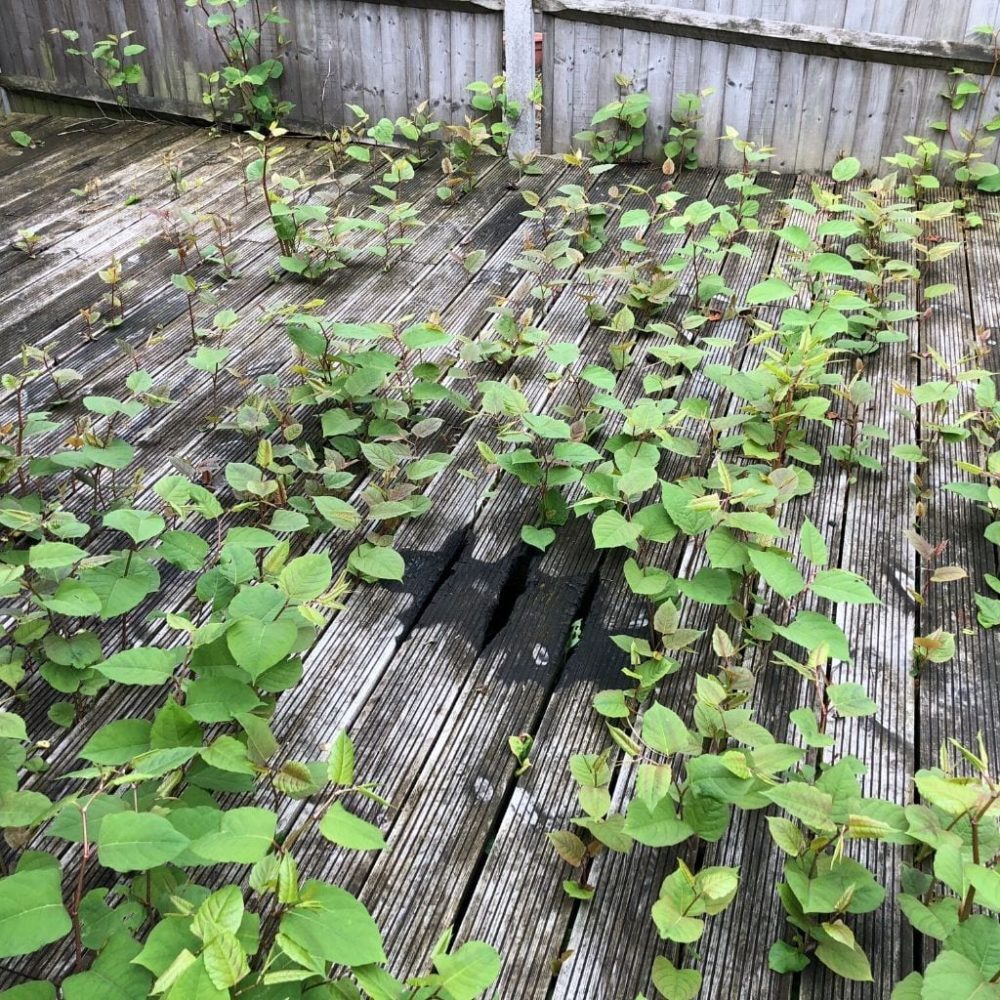
When it comes to Japanese Knotweed removal, timing is everything. This fast-growing invasive species can quickly take over gardens, construction sites, and riverbanks, making it a major concern for property owners across the UK. But did you know that the effectiveness of treatment can vary drastically depending on the season?
In this post, we’ll explore the seasonal growth patterns of Japanese Knotweed and reveal the best times of year to begin treatment for lasting results. Whether you’re planning a herbicide programme or preparing for site clearance, understanding the plant’s life cycle is essential.
Japanese Knotweed Through the Seasons
Spring (March – May): Early Emergence
- Knotweed begins to emerge from underground rhizomes.
- Stems appear as red-purple shoots that rapidly grow into bamboo-like canes.
- Not ideal for herbicide application the plant is growing too vigorously for chemicals to be fully effective.
Best for:
- Initial identification and surveys.
- Planning and scheduling treatment.
- Installing root barriers if needed.
Summer (June – August): Peak Growth
- The plant reaches full height (up to 3m), developing large, heart-shaped leaves.
- Energy is concentrated in foliage, but root systems are still active.
- Some herbicide treatments may begin now, but not at their most effective.
Best for:
- Site assessments.
- Starting initial herbicide treatment cycles under certain plans.
- Mechanical control or cutting (if permitted and compliant).
Autumn (September – November): Optimal Treatment Window 🍂
- This is the best time for herbicide-based Japanese Knotweed removal.
- The plant starts to draw nutrients and herbicides back into its rhizomes in preparation for dormancy.
- Treatments applied now are most likely to kill the root system effectively.
Best for:
✅ Systemic herbicide application
✅ Long-term treatment plans
✅ Monitoring and follow-up scheduling
Winter (December – February): Dormancy
- Above-ground growth dies back, leaving dead canes.
- Rhizomes remain alive beneath the surface, though inactive.
- Not suitable for herbicide use.
Best for:
- Cutting back dead canes.
- Excavation and site preparation.
- Planning long-term removal programmes.
🧪 Why Seasonal Timing Matters
Many clients ask, “Why can’t we just treat Japanese Knotweed any time of year?”
The answer lies in how the plant stores and uses energy. Herbicides are only effective when absorbed and transferred to the root system. Treating too early (spring) or too late (winter) means missing that vital window.
That’s why at CYB Environmental, we carefully tailor all Japanese Knotweed removal plans to match seasonal conditions maximising treatment success while minimising environmental impact.
📍 Site-Specific Strategies from CYB Environmental
Every site is different. Our expert team conducts detailed site surveys to assess:
- Growth stage of the plant
- Site access and usage
- Proximity to watercourses or protected areas
- Lender requirements (for mortgage-affected properties)
We then build a custom management plan, including:
- Scheduled herbicide treatments
- Excavation where necessary
- Insurance-backed guarantees
- Full RICS-compliant documentation
✅ Conclusion: Timing is Key to Successful Removal
To control Japanese Knotweed effectively, you need more than just treatment, you need the right timing.
Autumn is the ideal season for herbicide application, but success depends on your site conditions and goals. With a professional, seasonally aware approach, you can stop Knotweed in its tracks and safeguard your property’s value.
📞 Ready to Take Action?
Contact CYB Environmental today for expert advice on Japanese Knotweed removal.
We’ll assess your site, recommend the best seasonal strategy, and get the job done right backed by years of experience and proven results.

